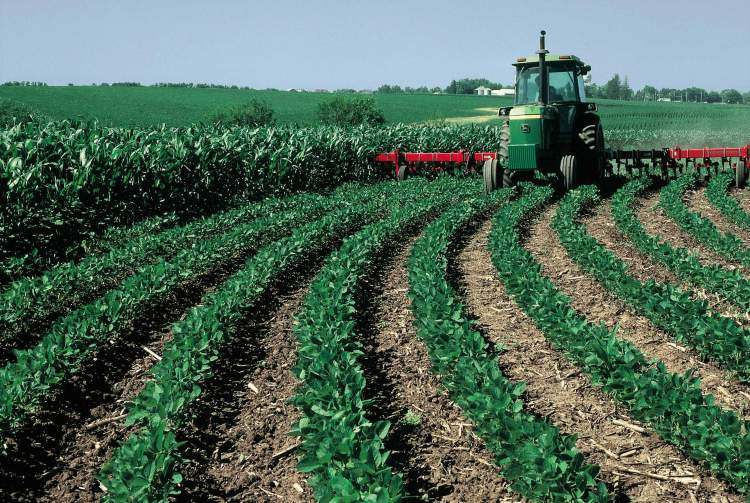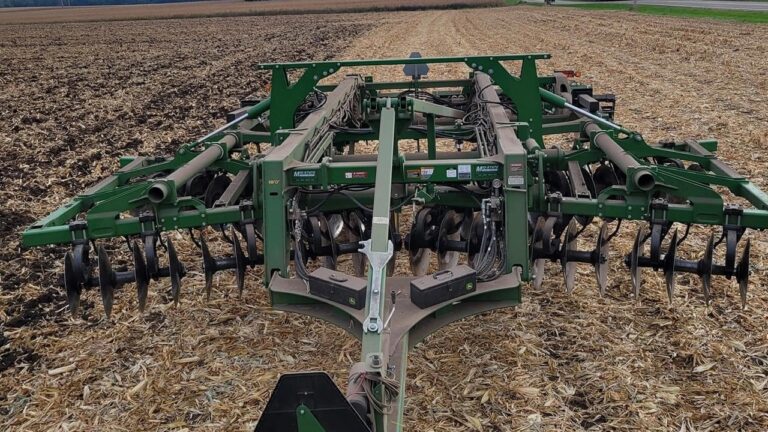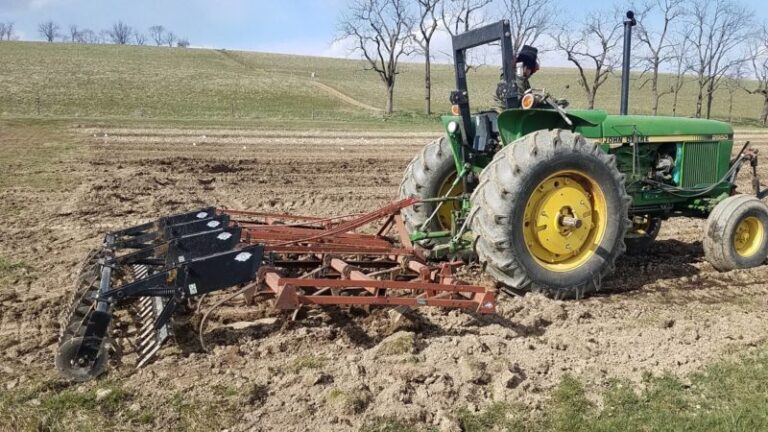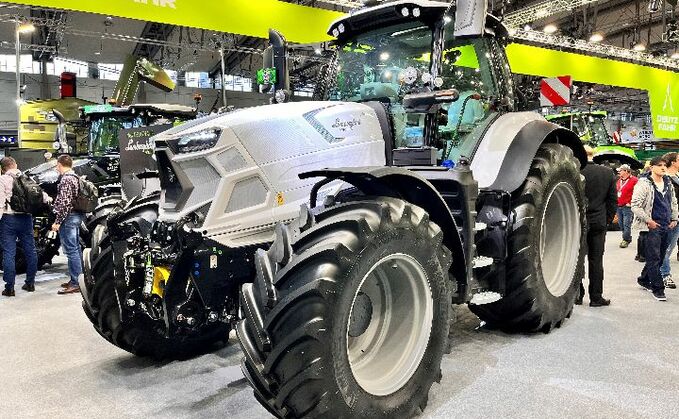In the ever-evolving world of agriculture, innovation plays a pivotal role in ensuring both productivity and sustainability.
One such innovation is vertical tillage, a practice that has gained momentum as an effective method for improving soil health, optimizing water retention, and increasing crop yields.
As modern farming continues to adopt more precision-driven technologies and sustainable practices, vertical tillage is emerging as a critical tool for improving crop production.
This article explores the benefits of vertical tillage for modern crop production, providing insights into how it enhances soil structure, minimizes erosion, and supports sustainable farming practices.
What is Vertical Tillage?
Vertical tillage is a soil management practice that focuses on disturbing the soil primarily in the vertical direction, rather than the horizontal or traditional tillage method, which often involves turning over large portions of soil.
Vertical tillage tools, such as discs and tines, are designed to slice through the soil at a depth of a few inches, allowing the soil to remain intact without causing excessive compaction or mixing. This approach differs from conventional tillage by focusing on minimal soil disturbance, which helps preserve the integrity of the soil structure.
1. Improved Soil Structure and Health
A primary benefit of vertical tillage is its ability to improve soil structure. Traditional tillage practices often result in the creation of compacted layers beneath the plow layer, which can hinder root growth and water infiltration.
Vertical tillage, however, targets the soil’s surface layers, allowing the soil to maintain its natural structure and reducing the likelihood of compaction deeper down. This results in a soil profile that is more conducive to healthy root systems and better plant growth.
Additionally, vertical tillage can help alleviate the negative effects of soil compaction caused by heavy machinery or over-tillage. By maintaining soil structure, vertical tillage encourages the development of soil aggregates that facilitate better air circulation, moisture retention, and nutrient availability for crops.
2. Enhanced Water Retention and Drainage
Water management is a critical concern for farmers, especially in areas that experience periods of drought or excessive rainfall.
Vertical tillage can improve water retention in the soil, making it more resilient to fluctuating weather conditions. By breaking up surface crusts and improving soil structure, vertical tillage allows water to penetrate the soil more efficiently, reducing runoff and minimizing the potential for erosion.
Moreover, vertical tillage tools often create channels within the soil, allowing for better drainage. In regions where excess water is a problem, this drainage can prevent waterlogging and root damage, creating a more balanced environment for crops to thrive.
3. Reduced Soil Erosion
Soil erosion is a significant concern for farmers, especially in areas with steep terrain or those subject to high wind or water runoff.
Traditional tillage methods can exacerbate soil erosion by loosening the topsoil and making it more vulnerable to the elements. Vertical tillage, on the other hand, minimizes soil disturbance, maintaining the integrity of the soil’s surface. This reduces the likelihood of soil being washed away by rainfall or blown away by wind, helping to conserve valuable topsoil.
By preserving the structure of the soil and minimizing disturbance, vertical tillage also supports the growth of protective cover crops and organic matter that can further reduce erosion risks. This sustainable practice allows farmers to retain more topsoil and increase long-term soil productivity.
4. Increased Fuel Efficiency and Lower Operational Costs
Another significant advantage of vertical tillage is its efficiency in terms of fuel consumption and operational costs. Because vertical tillage implements typically require less horsepower and operate at higher speeds compared to conventional tillage tools, they can significantly reduce fuel consumption during field operations. Farmers can cover larger areas in less time, reducing the overall time spent on tillage and lowering the cost per acre.
Moreover, the relatively low disturbance caused by vertical tillage means that fewer passes are required to achieve the desired soil structure. This reduces the need for multiple passes over the field, further decreasing wear and tear on equipment and improving cost-effectiveness.
5. Enhanced Weed and Residue Management
Managing crop residues and weeds effectively is essential for maximizing crop yield and minimizing competition for nutrients. Vertical tillage helps break down crop residues from previous seasons without completely mixing them into the soil.
This allows for quicker decomposition of organic matter, which provides a food source for beneficial soil microbes, while still maintaining a layer of residue on the surface that can help prevent weed germination.
The cutting action of vertical tillage tools also helps control weed growth by disrupting weed seeds near the soil surface. This provides a natural form of weed suppression, reducing the need for herbicide applications and promoting more sustainable pest management practices.
6. Suitability for No-Till and Minimum-Till Systems
Vertical tillage is particularly well-suited for no-till and minimum-till farming systems, which are increasingly popular due to their ability to reduce soil erosion, improve moisture retention, and promote soil health.
In these systems, the goal is to disturb the soil as little as possible, which can make it challenging to manage compaction and residue effectively.
Vertical tillage tools can be used in combination with no-till systems to address specific soil issues, such as compaction or excess residue, without the drawbacks of full tillage. By selectively disturbing only the necessary areas, vertical tillage supports the goals of no-till farming while enhancing soil structure and improving overall crop production.
7. Environmental and Sustainability Benefits
In today’s agricultural landscape, sustainability is a key concern for both farmers and consumers. Vertical tillage plays an important role in promoting sustainable farming practices.
By minimizing soil disturbance, reducing the need for chemical inputs, and promoting better soil health, vertical tillage aligns with the principles of sustainable agriculture.
The reduced fuel consumption associated with vertical tillage also lowers greenhouse gas emissions, making it a more environmentally friendly option compared to traditional tillage methods. As farmers continue to adopt more sustainable practices, vertical tillage provides a valuable tool for improving crop production while minimizing the environmental impact of farming operations.
Conclusion: A Key Technology for the Future of Crop Production
Vertical tillage represents a valuable advancement in modern crop production. By improving soil structure, enhancing water retention, reducing erosion, and promoting sustainable farming practices, vertical tillage helps farmers meet the challenges of the modern agricultural environment.
As the agricultural industry continues to focus on maximizing efficiency and sustainability, vertical tillage will undoubtedly play a crucial role in shaping the future of crop production.
For farmers looking to increase productivity, reduce costs, and preserve the health of their soils, vertical tillage offers an innovative, efficient, and environmentally friendly solution that will help them thrive in an increasingly complex and demanding agricultural landscape.









